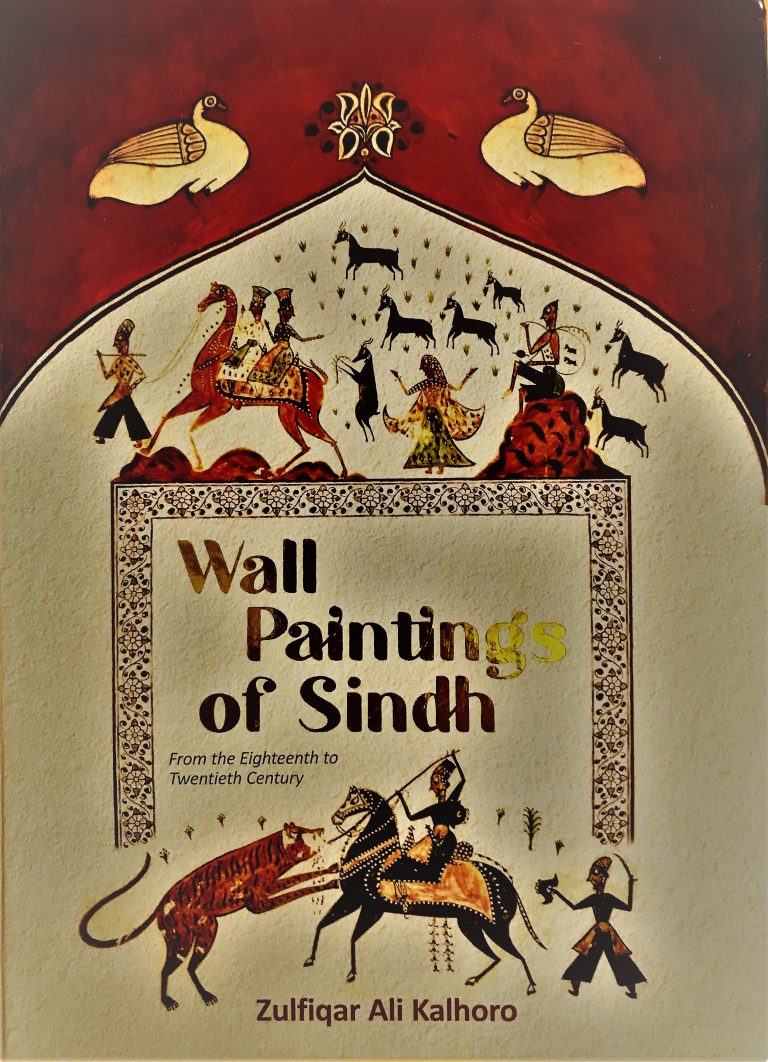
The book offers new areas of research such as what preparatory techniques were applied in wall paintings, what type of base stuff was used, how in process defects were filled, what types of stuff was applied for surface as well as for the layering.
By Zaffar Junejo
Last month I planned to review Dr. Zulfiqar Ali Kalhoro’s recently published book ‘Wall Paintings of Sindh – from the Eighteen to Twentieth Century’. I attempted, but failed to write even an opening sentence. I remember, I eagerly used to open the laptop, but my eyes watched blinking cursor, and my fingers were ready to strike the letters. But nothing happened. I thought there might be writers’ block. Or I was nervous – how a historian could step in, subject of anthropologist. Perhaps, I was under the spell of the book’s magical images and deep ethnographic narrative about the marginal people and forgotten places. I think the last sentence was true in my case. If it is so, then present review belongs to ‘affirmation’ category of writing. Let me elaborate the quoted word – it states that I appreciate the writer’s labor, positively register the content and consider that the book has worth in bibliographic world.
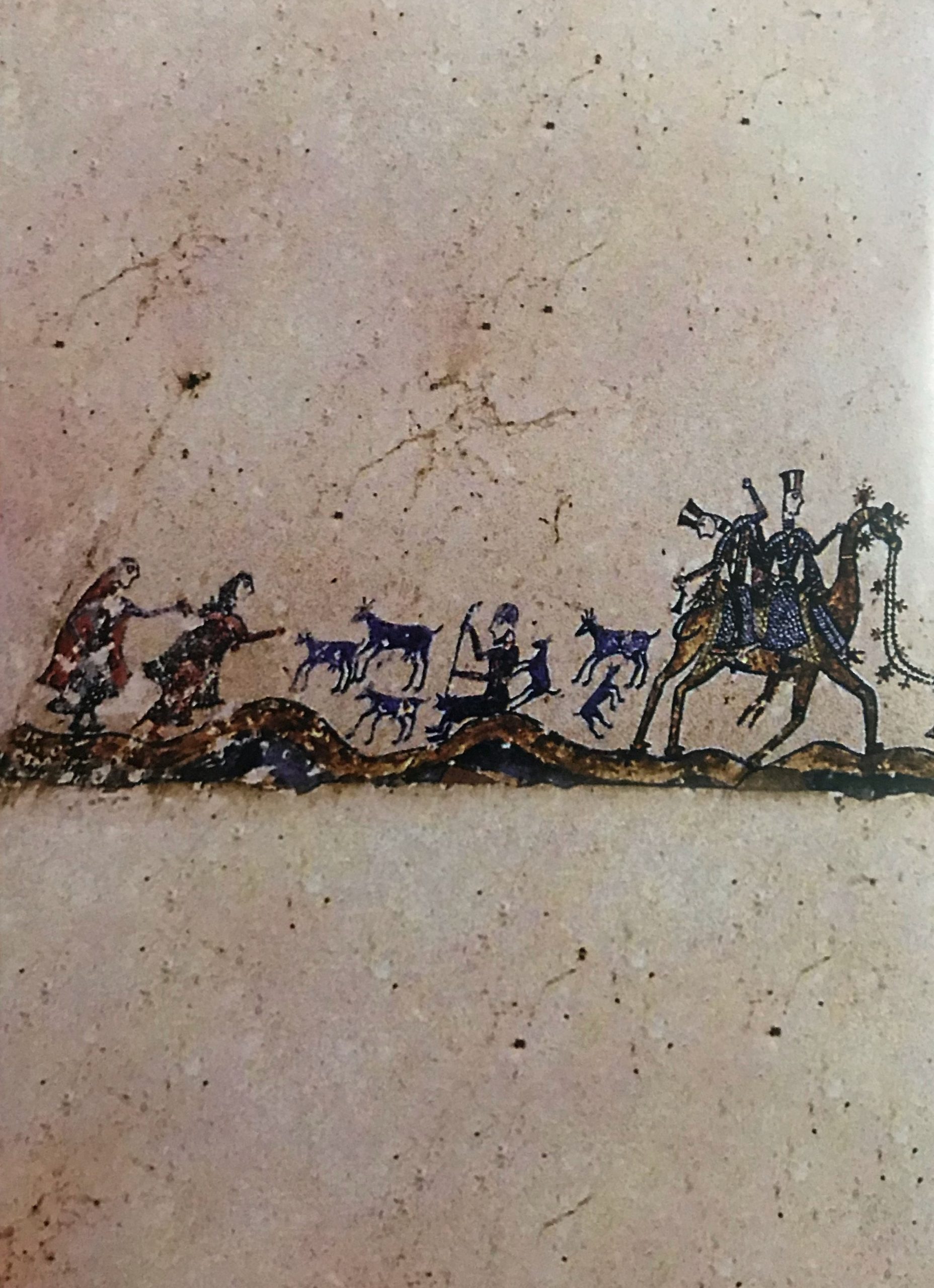 My confirmatory mental state has unconsciously compelled me to write an appreciative review. The book contained 9 chapters and 222 pages. Its size roughly matches to the thesis format. It must be appreciated that it is not an armchair researched work. It is an outcome of author’s more than a decade field research, although the author has substantially supported his primary observations with secondary sources. The cited references cover 58 years of the published material. The author has consulted almost all major published works, which are somehow related to the themes of the book.
My confirmatory mental state has unconsciously compelled me to write an appreciative review. The book contained 9 chapters and 222 pages. Its size roughly matches to the thesis format. It must be appreciated that it is not an armchair researched work. It is an outcome of author’s more than a decade field research, although the author has substantially supported his primary observations with secondary sources. The cited references cover 58 years of the published material. The author has consulted almost all major published works, which are somehow related to the themes of the book.
In addition, the book contains the locations of the both sides of the River Indus – the right bank as well as the left bank. The author has visited and wrote about 44 locations/structures. Out of it 26 exist on the right bank and 18 are found on the left side of the Indus River. These structures neither belong to one era, nor are the wall paintings uniform. However, most of the wall paintings belong to the 18th century to 20th century. Simultaneously, portrayed themes of the paintings depict the different scenes. The book reveals that common ‘picture-themes’ in Kalhora and Talpur eras were – Trees, Hunting Scene, Animal, Mourning, Conversation, Singing, Dance, Battle, Folklore, Bird, Scared Text, Habitat, Landscape and Legend. The book has 188 photographs of paintings, and out of it 31 paintings are of the full size. These paintings as well as calligraphy show diversified techniques and styles such as graffiti-style, traditional, and ethnic. The most dominant theme the author has covered in his book is folk romances such as Sassui-Punhun, Suhni-Mehar, Nuri-Jam Tamachi, Moomal-Rano and Umar-Marvi. Apart from it, the romance of Laila-Majnun was also discussed and explored. All these wall paintings were not an anthology of the paintings. The author has described each chapter, theme and even single wall painting. The chapters’ opening paragraphs, set the context of theme, and they portrayed pictures’ subject of the nature of the painting.
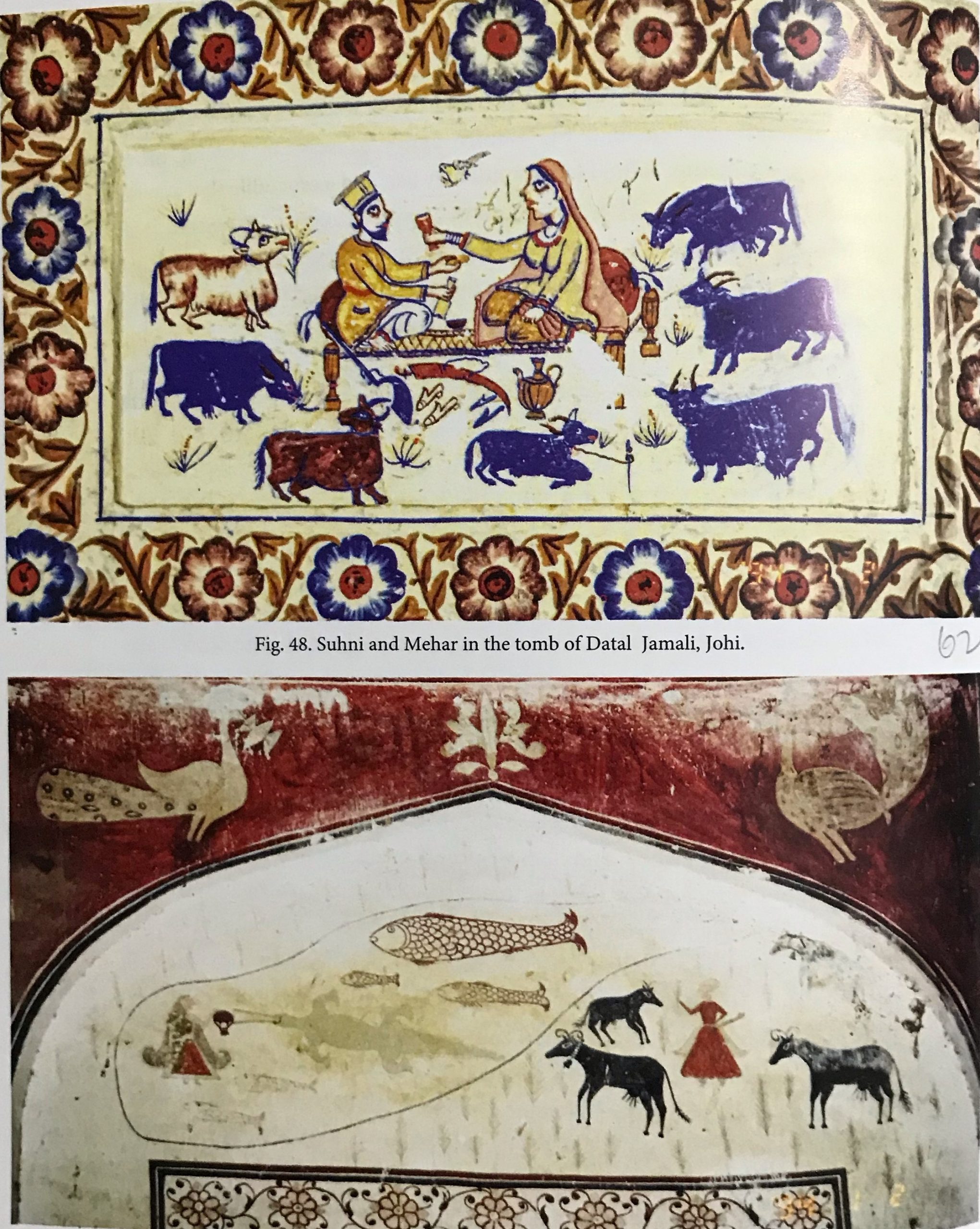 The book has helped me to understand how over the period peoples’ perceptions about their immediate as well as distant goals and objective have changed. The book also narrates how these wall paintings serve the function of the history. The last chapter entitled ‘Patrons and Painters’, spotlights on the contribution of institutions in a broader historical context. Another dominant aspect of the book is the author’s taken photographs. These photographs show wall paintings’ lines have become the basic element of communication. Some paintings contrast the color, shade and background communicating about the depicted scene.
The book has helped me to understand how over the period peoples’ perceptions about their immediate as well as distant goals and objective have changed. The book also narrates how these wall paintings serve the function of the history. The last chapter entitled ‘Patrons and Painters’, spotlights on the contribution of institutions in a broader historical context. Another dominant aspect of the book is the author’s taken photographs. These photographs show wall paintings’ lines have become the basic element of communication. Some paintings contrast the color, shade and background communicating about the depicted scene.
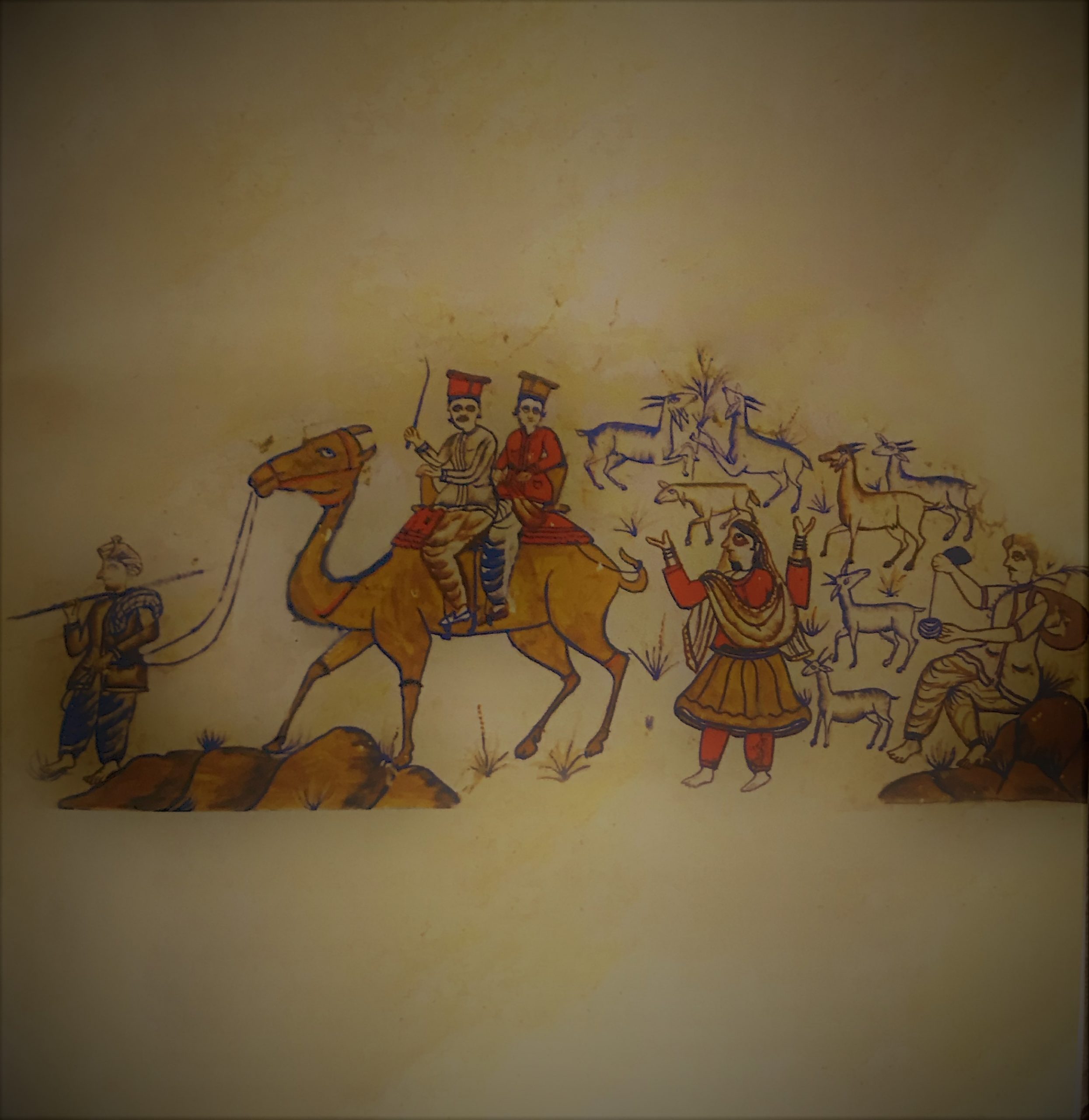 The common aspect in all paintings was the reference of time and movement. The photographs have become the communication channels for the readers. It might be said that each wall painting tells a story, and the book’s text has become the medium of that tale. The book has become a cultural compendium of Sindh, where author has presented the visual culture of Sindh showing people’s actions, aspirations, and memoirs. In addition to that the book has opened new vistas for artists, interior designers, architects and other scientific bodies to conduct the technical studies to shed light on the materials and techniques employed in the execution of the wall paintings. The book has offered new areas of research such as what preparatory techniques were applied in wall paintings, what type of base stuff was used, how in process defects were filled, what types of stuff was applied for surface as well as for the layering.
The common aspect in all paintings was the reference of time and movement. The photographs have become the communication channels for the readers. It might be said that each wall painting tells a story, and the book’s text has become the medium of that tale. The book has become a cultural compendium of Sindh, where author has presented the visual culture of Sindh showing people’s actions, aspirations, and memoirs. In addition to that the book has opened new vistas for artists, interior designers, architects and other scientific bodies to conduct the technical studies to shed light on the materials and techniques employed in the execution of the wall paintings. The book has offered new areas of research such as what preparatory techniques were applied in wall paintings, what type of base stuff was used, how in process defects were filled, what types of stuff was applied for surface as well as for the layering.
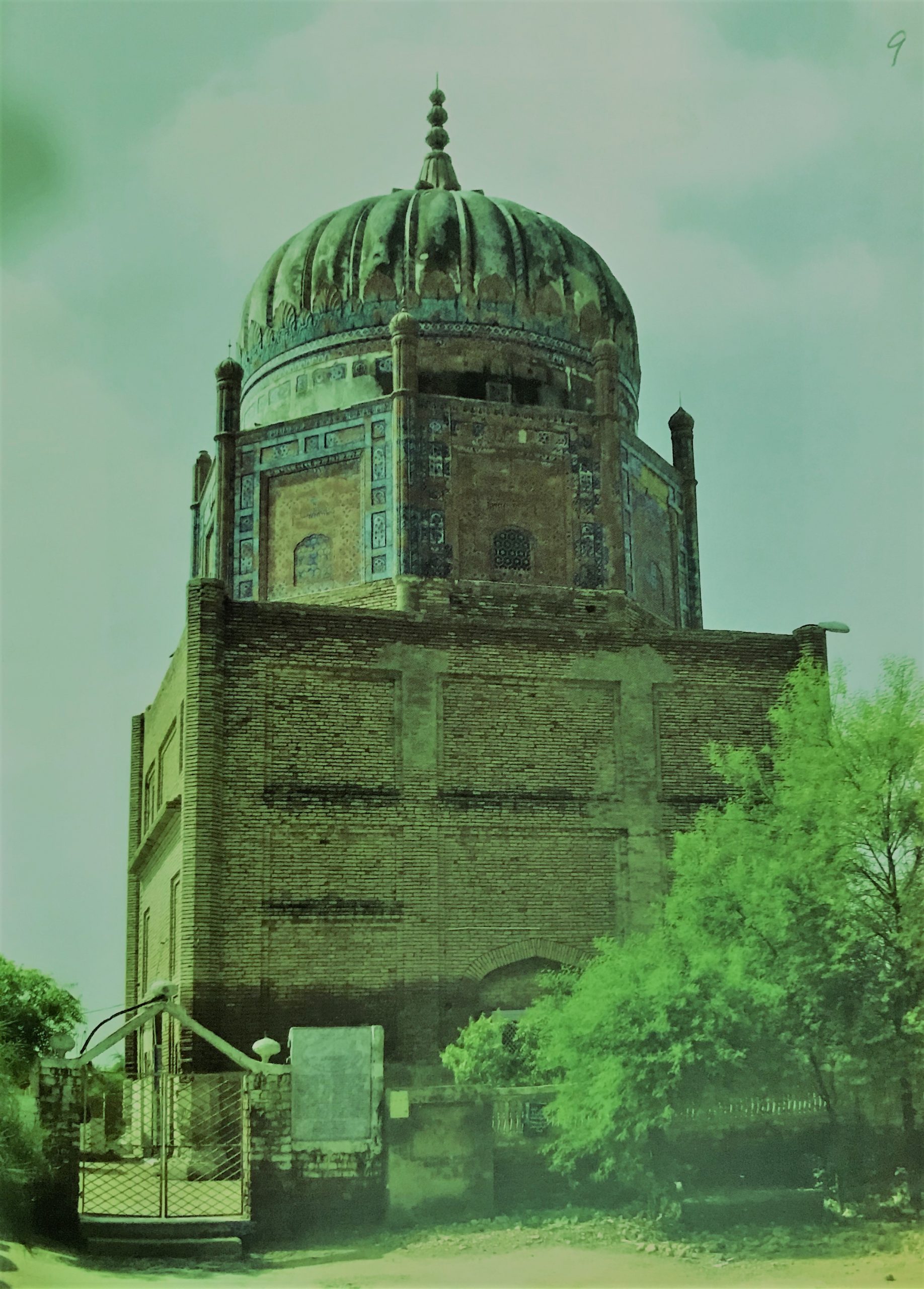 The book offers another new aspect for Sindhologists that what construction material and construction techniques were used for the tombs, Havilis, graveyards, worship places and royal courts in Sindh. The book also invites academia for research in ‘historical art studies’. The preliminary work may be started through ‘chronological study’ and ‘contemporary study’. Again, we are thankful to the author that his seminal work has stopped the vanished memoirs of Sindh’s mural and wall paintings’ tradition.
The book offers another new aspect for Sindhologists that what construction material and construction techniques were used for the tombs, Havilis, graveyards, worship places and royal courts in Sindh. The book also invites academia for research in ‘historical art studies’. The preliminary work may be started through ‘chronological study’ and ‘contemporary study’. Again, we are thankful to the author that his seminal work has stopped the vanished memoirs of Sindh’s mural and wall paintings’ tradition.
[author title=”Zafar Junejo ” image=”https://sindhcourier.com/wp-content/uploads/2021/07/Dr.-Zafar-Junejo.jpg”]Dr. Zaffar Junejo has a Ph.D. in History from the University of Malaya. His areas of interest are post-colonial history, social history and peasants’ history. Presently, he is associated with Sohail University and Institute of Historical and Social Research, Karachi.[/author]